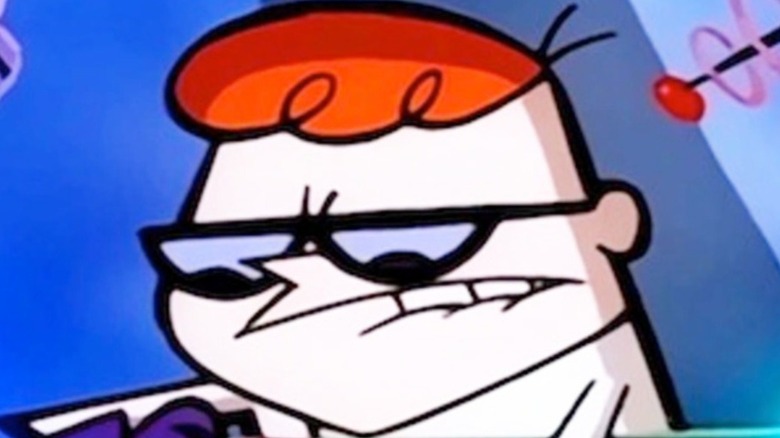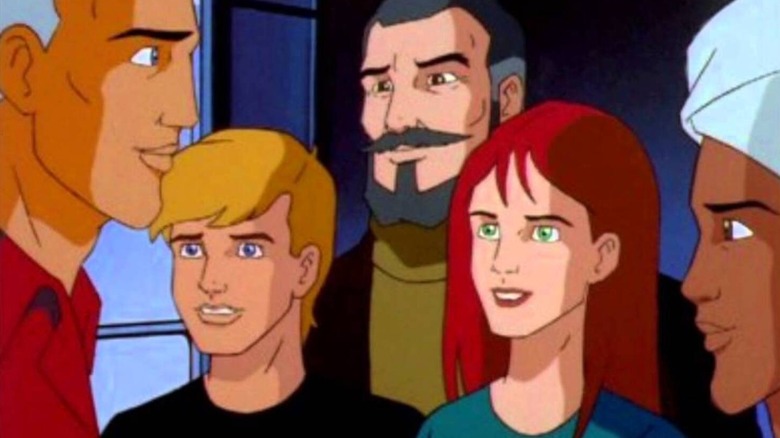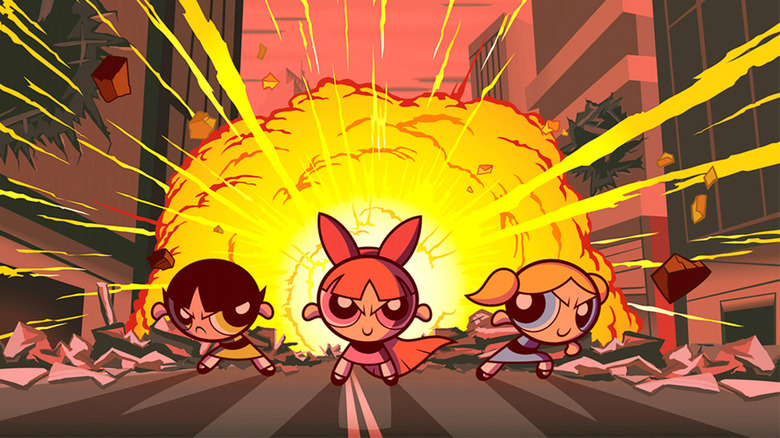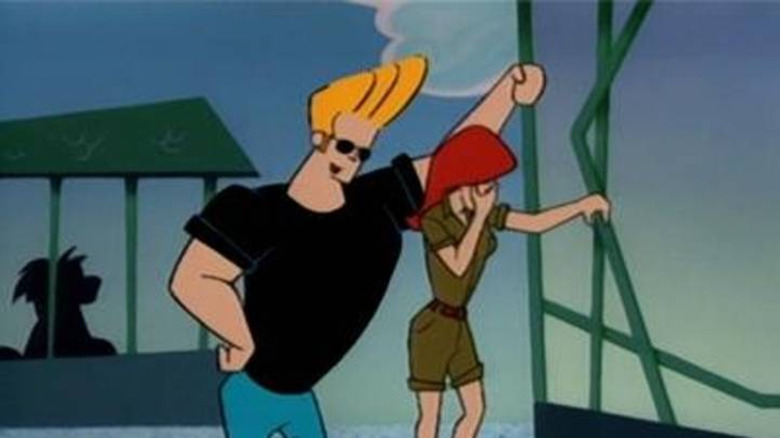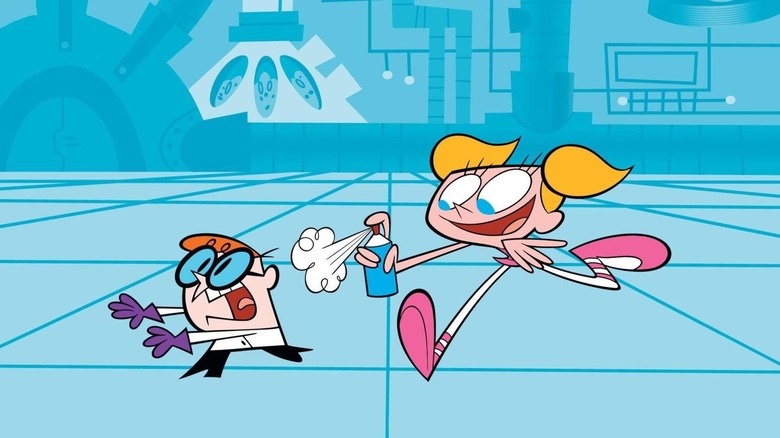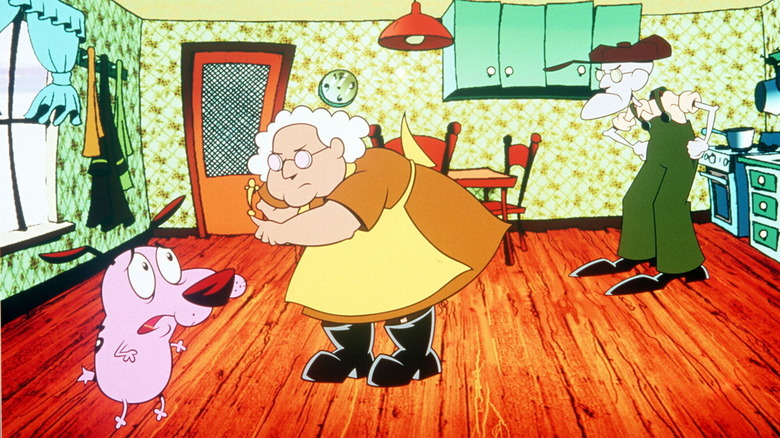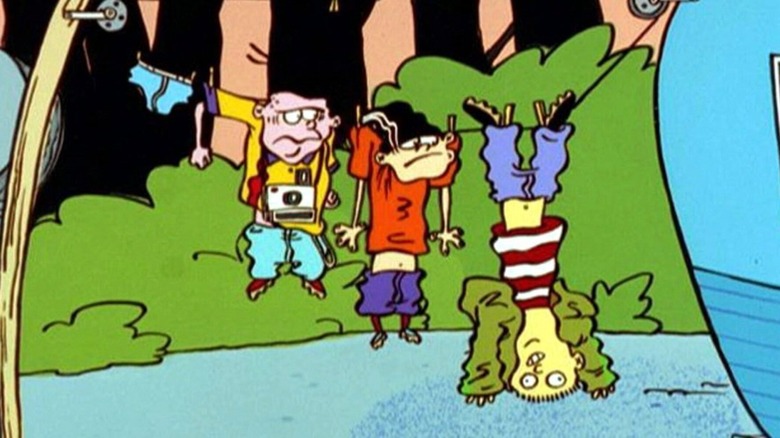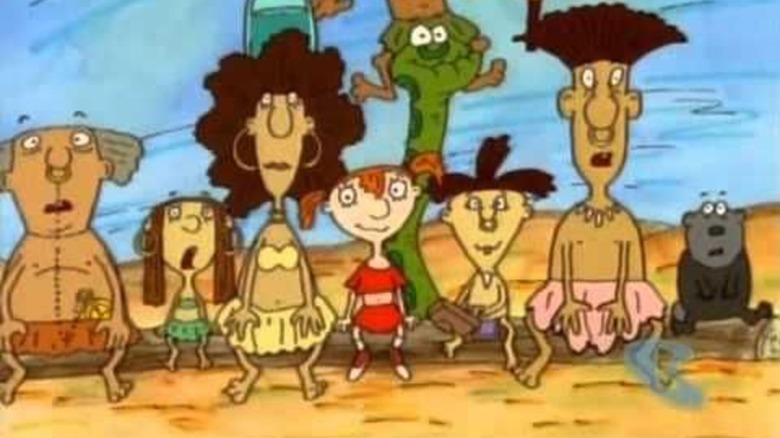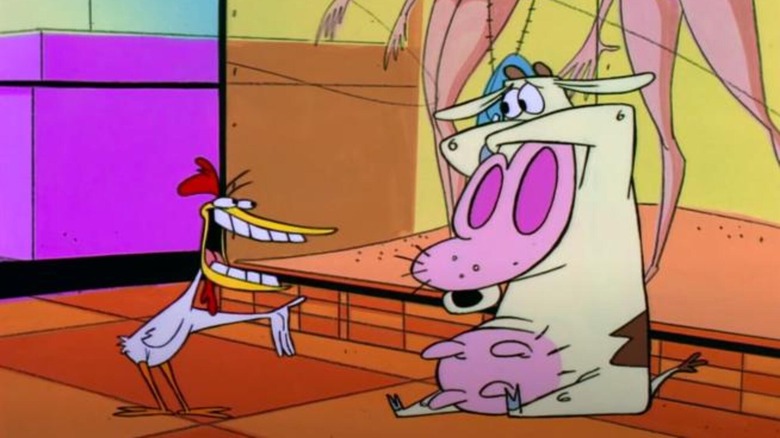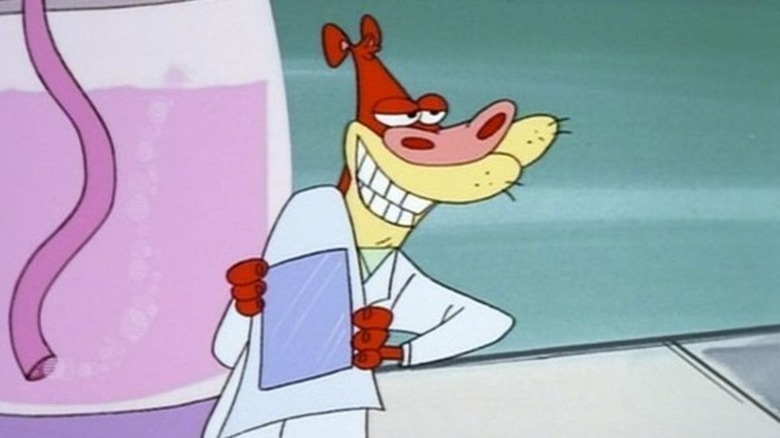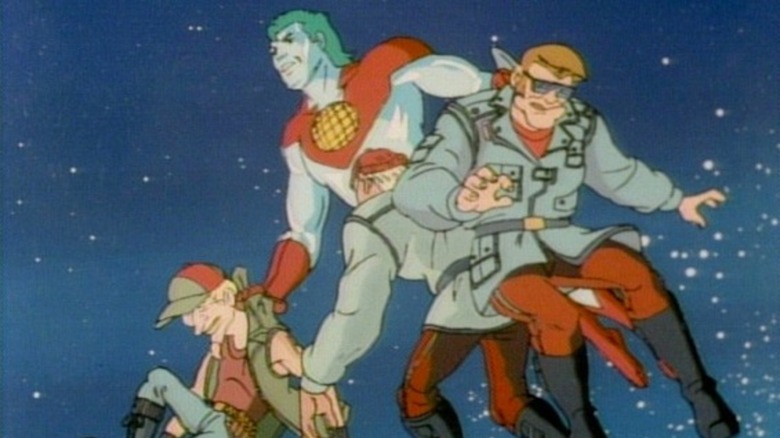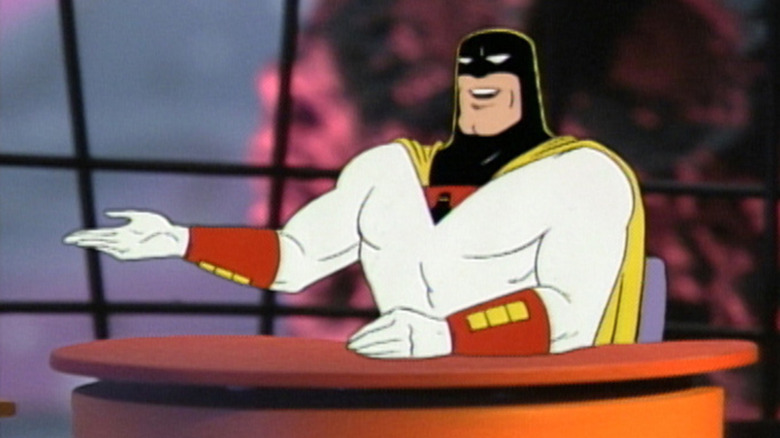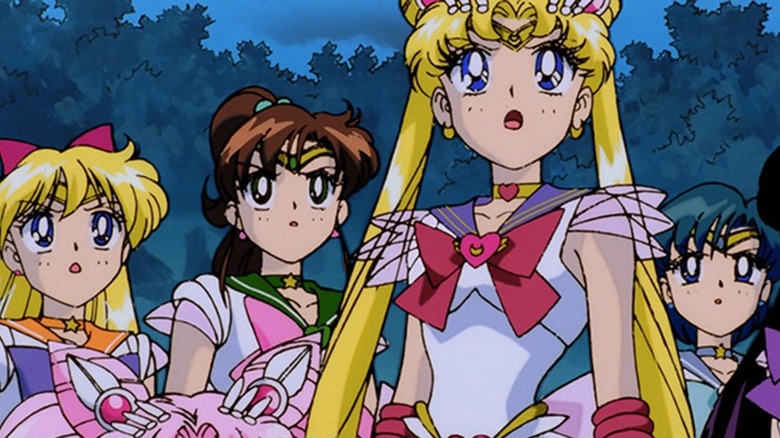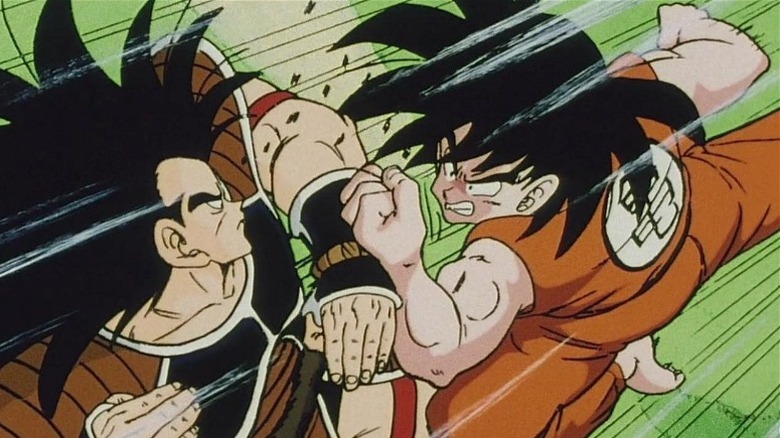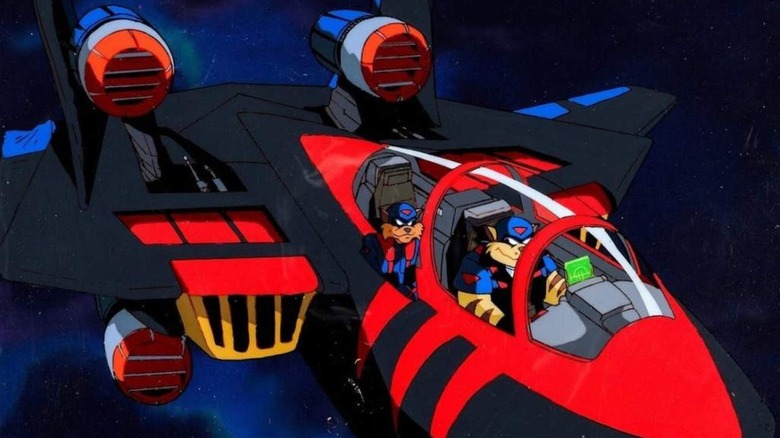The Best '90s Cartoon Network Shows
The 90's were an important decade for the animation industry. The previous years had been ruled by Disney cartoons, Looney Tunes, and Hanna-Barbera productions. While deserving of their classic, they were also a product of their times — relying on princesses and songs, slapstick, anthropomorphized animals and other foundations that had begun to show their age. These trappings also limited the reach and impact of such cartoons, because they had been created as "kid stuff," and decades later were still largely considered as such. The fact that most '80s cartoons (centering around G.I. Joe, He-Man, The Smurfs and more) were made primarily to sell toys certainly didn't help.
Animation was ready for a revolution, and the industry delivered in spades. First, a strangely subversive new show called "The Simpsons" began appearing just as the '90s came in, taking a decidedly adult, satirical look at modern society. Then the Cartoon Network launched on October 1, 1992 with the promise of airing cartoons 24/7, a feat unheard of at the time.
To fill a complete day's worth of programming, Cartoon Network relied on a legendary team of animators to create the next generation of cartoons for kids. These new cartoons were not afraid to tackle adult themes, reinvent the way characters looked in a kid's cartoon, and quite frankly were cool in ways the medium had never seen before. Here are 14 Cartoon Network shows from that era that continue to inspire devotion among fans and critics alike.
The Real Adventures of Jonny Quest (1996 - 1997)
Before there was Ben 10, Danny Phantom or Kim Possible, there was Jonny Quest, the original pint-sized adventurer. The "Jonny Quest" franchise has a long life (beginning with a 1964 series and then a 1986 revival), and was revived once again to great acclaim on Cartoon Network with "The Real Adventures of Jonny Quest."
The show found Jonny as a teenager, still living a life of adventure with his father Dr. Quest, a famous phenomenologist, adopted brother Hadji Singh, bodyguard Race Bannon, Race's daughter Jessie, and pet bulldog Bandit. Jonny and his allies travelled the world investigating paranormal mysteries, all while battling a rogues' gallery of villains with evil plans of world domination and/or destruction.
In keeping with its futuristic bent, the series was famed for having one of the earliest uses of 3D animation in children's television, through the introduction of a virtual reality environment named QuestWorld that was rendered using computer animation and motion capture — truly revolutionary stuff at the time that is used in virtually every animated (and many live action) forms of entertainment today. Not to be overpowered by the technology, "The Real Adventures of Jonny Quest" was also praised for its mature writing and themes, another pioneering element of the show that would lay out a blueprint for the industry.
The Powerpuff Girls (1998 - 2005)
Three kindergarten-aged girls named Blossom, Bubbles, and Buttercup are living happily with their scientist father in the city of Townsville. At regular intervals, the city is attacked by giant monsters, evil geniuses, and whatever "HIM" was supposed to be. But the three girls are up to the challenge of protecting their city, because they were created out of a lab experiment gone wrong, which granted them a range of superpowers.
"The Powerpuff Girls" was one of the biggest successes that Cartoon Network had early on to help establish them as a force in the animation industry. The show was a delightful pastiche of superhero comic books, with a dash of cuteness from the "Richie Rich" comics era thrown in for good measure. The series was also known for tongue-in-cheek jokes that might go over the heads of its young audience while eliciting chuckles from their parents.
To this day, fans have fond memories of the fiery Buttercup, cute-as-a-button Bubbles, and level-headed Blossom. So much so that the industry is planning a live-action reboot. Whether the new show succeeds or fails, fans will always have the original cartoon series to fall back on, which still holds up very well.
Johnny Bravo (1997 - 2004)
Imagine if famed (and somewhat canceled) skunk lover Pepé Le Pew from "Looney Tunes" was a human dude. Now imagine if that dude combined Pepé's love for the ladies with a great love for his own style and physique, had absolutely terrible flirting skills, and a brain barely bigger than an acorn. That is Johnny Bravo in a nutshell, the titular character who could always be relied upon to unsuccessfully hit on any girl around him.
In the wrong storyteller's hands, Johnny had the potential to be incredibly annoying. Yet, there was something lovable about Johnny's never-ending quest to get with the women. "Johnny Bravo" was also a show that delighted in placing its main character in parodies of situations that audiences could recall from "James Bond" films, "Tarzan" comics, and even the "Twilight Zone" series.
Such diverse influences made for crackling comedy as Johnny pitched himself headfirst into the most bizarre situations just because he noticed a pretty girl in the vicinity. "Johnny Bravo" included an interesting cast of supporting characters that could be relied upon to keep Johnny's feet on the ground ... or occasionally get him into even more trouble.
Dexter's Laboratory (1996 - 2003)
A short, bespectacled kid with a puzzling accent named Dexter lives in an ordinary home with an ordinary family. But within his ordinary room, Dexter hides a secret. He is the smartest kid in the world, and beneath his room lies the entrance to the most advanced laboratory in existence (despite how vigorously Mandark might deny that claim). With the help of his gadgets, a short temper, his annoying sister Dee Dee, and an ego that dwarfs his lab, Dexter embarks on a series of wild escapades that can involve anything from clones to planet-destroying entities.
For Cartoon Network, "Dexter's Laboratory" was "The Simpsons" of the '90s, appealing to both kids and adults. The path-breaking success of "Dexter's Laboratory" established the channel as an animation force and set a new standard for cartoon shows, one still trying to be met today. Over its 4 season run, the series won 12 Annie Awards, with nominations for four Primetime Emmy Awards, and four Golden Reel Awards.
Perhaps just as importantly, "Dexter's Laboratory" proved a great training ground for many notable names in the animation industry, and helped launch the career of Genndy Tartakovsky ("Samurai Jack", "Star Wars: Clone Wars"), Craig McCracken ("The Powerpuff Girls", "Foster's Home for Imaginary Friends"), Seth MacFarlane ("Family Guy"), Butch Hartman ("The Fairly OddParents", "Danny Phantom"), Paul Rudish ("Sym-Bionic Titan"), and Rob Renzetti ("My Life as a Teenage Robot", "Gravity Falls").
Courage the Cowardly Dog (1999 - 2002)
Far out in the middle of Nowhere lies a lonely farm owned by good-natured Muriel and her crabby husband Eustace Bagge. But the farm rarely stays lonely for long, being frequently visited by all manner of supernatural horror, from aliens to vampires. Standing between Muriel and Eustace and these sinister visitors is their pet dog named Courage.
Courage is defined by his almost constant state of fear of the world. He is afraid of shadows, afraid of loud noises, and absolutely terrified of the many threats his little family faces. Yet, despite breaking out into high-pitched screams of terror at the mere sight of danger, Courage always manages to find a way to protect Muriel and Eustace without them ever knowing about it.
"Courage the Cowardly Dog" was a funny, chilling series that delighted in pushing the boundaries of horror for children's programming. The pilot episode of the show was nominated for an Academy Award for Best Animated Short Film at the 68th Academy Awards. Even after its window of production on Cartoon Network, the show has continued to enjoy critical acclaim and fond remembrance from a loyal fanbase.
Ed, Edd n Eddy (1999 - 2009)
In the fictional town of Peach Creek live three best friends named Ed, Edd, and Eddy. Although not overly bright in the traditional sense, the trio are prone to hatching one scheme after another to earn money from their peers so they can buy their favorite treat, jawbreakers. Unfortunately, the schemes hatched under Eddy's leadership rarely work out, and frequently backfire on the would-be businessmen.
"Ed, Edd n Eddy" was not a show that feels like it should work as well as it actually did. The humor is fast-paced, bawdy and frequently gross. Also the animation style was deliberately made to resemble cartoons from the 1940s to 1970s, rather than those that became trendy in the '90s. This gave the show a look that resembled a child's crude drawing – and making matters more offbeat, the music for the show was based on jazz and jump blues, rockabilly, boogie-woogie, and rock and roll.
Yet, despite this odd mix of stylings, the show not only survived but thrived. "Ed, Edd n Eddy" ran for nearly 11 years (including a TV movie), setting a record for the longest-running Cartoon Network original series. It was nominated for multiple awards, and established an entire franchise consisting that also included comics and video games.
Mike, Lu & Og (1999 - 2001)
When 11-year-old Manhattan-born girl Michelanne (Mike for short) applies to go study on a tropical island as a foreign exchange student, she does not realize her life is about to change forever. Mike gets accidentally dumped on an island named Albonquetine that few outsiders known about. The island is the central setting of "Mike, Lu & Og."
Albonquetine is populated by the descendants of a group of British passengers and crew who had been shipwrecked on the island a long time ago. Now, the islanders have adapted to their new environment, and encourage Mike to do the same. Soon Mike gets to know the other members of her new Island home. She becomes friends with Lu, a 10-year-old self-proclaimed princess of the island, and a rather spoiled, arrogant character.
But Mike has better luck being friends with Og, a 7-year-old native of Albonquetine. Aside from having a wise and helpful nature, Og is friends with many native animals. He is also a bit of a genius, whose inventions often prove to be the means of solving an episode's problem. The show ran for two seasons before being cancelled, but continues to be watched around the world.
Cow and Chicken (1997 - 1999)
The main two characters of Cartoon Network's "Cow and Chicken" were the titular, anthropomorphic Cow and Chicken, who somehow managed to be biological siblings. If that idea is difficult to digest, wait until you get a load of the eccentric comedy, surreal imagery, grotesque slapstick, and oft-off-putting storylines that made it all make sense, in a nonsensical way.
For instance, the second season of "Cow and Chicken" had a segment called "Buffalo Gals," which ended up being banned by Cartoon Network after the studio received complaints against the episode's liberal use of visual and verbal innuendoes.
But despite the controversies, the show was generally met with critical acclaim, and nominated for two Emmy Awards. After the series' cancellation, the show continued to be referenced in other Cartoon Network series, like Cow popping up in the beginning of "The Grim Adventures of Billy & Mandy" episode "Herbicidal Maniac." Cow and Chicken also made a cameo appearance as aliens in "Ben 10: Omniverse."
I Am Weasel (1997 - 1999)
I. M. Weasel is a smart little animal, beloved by all and successful in everything he attempts. I. R. Baboon is a less intelligent, less successful baboon who lives in a state of constant envy of Weasel's success. Baboon constantly tries to upstage Weasel, but to no avail.
Oddly enough, beginning with its second season, "I Am Weasel" began taking place in the same fictional setting as "Cow and Chicken," with the latter show's main villain "Red Guy" becoming a part of "I Am Weasel" as an antagonist.
One thing the show did that made it stand out from the crowd was that the characters did not stay the same over time, as is standard with cartoons. Instead, both Weasel and Baboon were shown to evolve over the span of 5 seasons. Whereas Weasel began as kind and gracious to everyone who needed his help, he became gradually frustrated over the continuing stupidity of everyone around him. Meanwhile, Baboon gradually grew more mellow. He eventually became Weasel's friend, and by the series finale even took over Weasel's role as the series star.
Captain Planet and the Planeteers (1990 - 1996)
It's the '90, and the planet is in danger. Gaia, the spirit of Earth is watching big companies massively pollute the planet, and it sickens her. Gaia assembles five teens from across the globe, dubbed the "Planeteers," to fight pollution with the power of knowledge and five magic rings like a bunch of hippie Power Rangers. When an eco-problem arises that is too much for the Planeteers to handle, their ring powers combine to create the holographic superhero android Captain Planet!
"Captain Planet and the Planeteers" is perhaps the most well-known "edutainment" cartoon of the era. The show was made with the desire to teach children about the dangers of pollution and what they can do to help. To that end, most of the environmental messaging on the show was pretty ham-fisted, as was the depiction of the "eco-villains" like Hoggish Greedly and Verminous Skumm.
Still, despite the excess of cheese, the show was praised for raising awareness about pollution issues among children. Captain Planet has also become a popular figure in pop culture, even if he is often depicted in a satirical manner, such as Don Cheadle's viral take on a vengeful Captain Planet.
Space Ghost Coast to Coast (1993 - 2011)
At first glance, a "Space Ghost" show might feel like another generic superhero cartoon. But this was something far more daring, a series that would define Cartoon Network and then the [adult swim] programming block, serving as a forerunner to the abridged parodies of classic cartoons that are so popular on YouTube these days.
Built in the form of a parody talk show that reused previous animations of "Space Ghost" cartoons from the 1960s, "Coast to Coast" rebooted the series while targeting a teen and adult audience.
The show had Space Ghost acting as a host for his own talk show. He would interview fellow superheroes, as well as authentic celebrities who often seemed amused, confused and/or in on the joke. These guests included Hulk Hogan, Jim Carrey, the Bee Gees and a 10-year-old Raven-Symone (being interviewed by "Macho Man" Randy Savage as Space Ghost's grandpa). All this was going on while Space Ghost's arch enemies Zorak (his band-leader) and Moltar (his producer) were forced to work at the studio as punishment for their crimes, causing them to frequently voice their hatred for Space Ghost.
Sailor Moon (1998 - 2002)
Based on the Japanese manga "Bishōjo Senshi Sērā Mūn", "Sailor Moon" followed the adventures of a schoolgirl named Usagi Tsukino and her superhero alter ego Sailor Moon, tasked to search for a magical artifact called the "Legendary Silver Crystal."
In order to find the crystal, Usagi required the aid of a group of friends called the "Sailor Soldiers." Together, Usagi and her friends fought villains eager to use the Silver Crystal to bring about the destruction of the solar system.
Although "Sailor Moon" was not a Cartoon Network original show, it debuted on the network in the west after the studio wisely purchased the rights for distribution, running for four years. The show would become an important part of the studio's popular "Toonami" block of action-oriented programming, with "Sailor Moon" credited as one of the first shows to kickstart the west's interest in anime.
Dragon Ball Z (1998 - 2003)
Based on the wildly-successful manga series of the same name, "Dragon Ball Z" was a continuation of the grown-up adventures of Son Goku, a child born to an alien warrior race who would become Earth's greatest protector. Together, Goku and his allies defended their world from alien warlords, gods of destruction, and wannabe-universe-ending entities.
Like "Sailor Moon," "Dragon Ball Z" was not a Cartoon Network original, but aired on the network in the West for the first time. The response to the series was lackluster at first, credited in retrospect to dubbing issues and certain scenes that may have been too graphic for children. The Japanese animation style, so different from western cartoons, also raised some concerns amongst parents.
But over time, the "Dragon Ball" franchise has outstripped most other anime imports, becoming immensely popular in the West. From the early 2000s, other anime series followed the example of "Sailor Moon" and "Dragon Ball Z" in gaining popularity here —sometimes even more than they achieved back home. In many ways, the success of these anime series would come to influence the way America tells its own stories.
SWAT Kats: The Radical Squadron (1993 - 1994)
Thanks to the popularity of the Teenage Mutant Ninja Turtles, the '90s were a popular time for irreverent anthropomorphic superheroes who used sweet weaponry to save the day. "Swat Kats: The Radical Squadron" was one of the coolest offshoots, one that actually tried to do its own thing rather than simply copy the Turtles.
In the fictional metropolis of Megakat City populated by felines, Jake "Razor" Clawson and Chance "T-Bone" Furlong were officers of a paramilitary law enforcement agency. When a botched mission lead to the radical duo losing their jobs, they continued fighting crime as vigilantes. Razor and T-Bone were certainly innovative, employing discarded military parts and weapons from the salvage yard to build themselves a three-engine jet fighter called the Turbokat, a motorcycle called the Cyclotron, the subterranean TurboMole, a hovercraft called HoverKat, and the Thunder Truck.
"Swat Kats: The Radical Squadron" was an immediate hit upon release, if a somewhat controversial one that reportedly ran afoul of network owner Ted Turner when he felt the need to curtail cartoon violence on his airwaves. Originally airing on TBS's syndication block "The Futuristic World of Hanna-Barbera," it later re-aired on Cartoon Network and Boomerang.
Unfortunately, lack of proper marketing and criticism over the show's violent content led to a premature cancellation following a couple seasons and a special. Today, the series lives on via a cult following that appreciates its mature storylines, edgy action, the coolest weapons ever, and that bangin' theme music.
Co-creators Christian and Yvon Tremblay launched a Kickstarter campaign in 2015 to revive SWAT Kats. Dubbed "SWAT-Kats: Revolution," the project has since proceeded with multiple obstacles in the way (Hulu, Netflix, WB and others have passed on airing it), but the Tremblays are insistent that they will see the revival across the finish line. "We are more motivated than ever before," wrote Christian in 2020. "We will make SK happen, no matter how hard or how long it takes."
